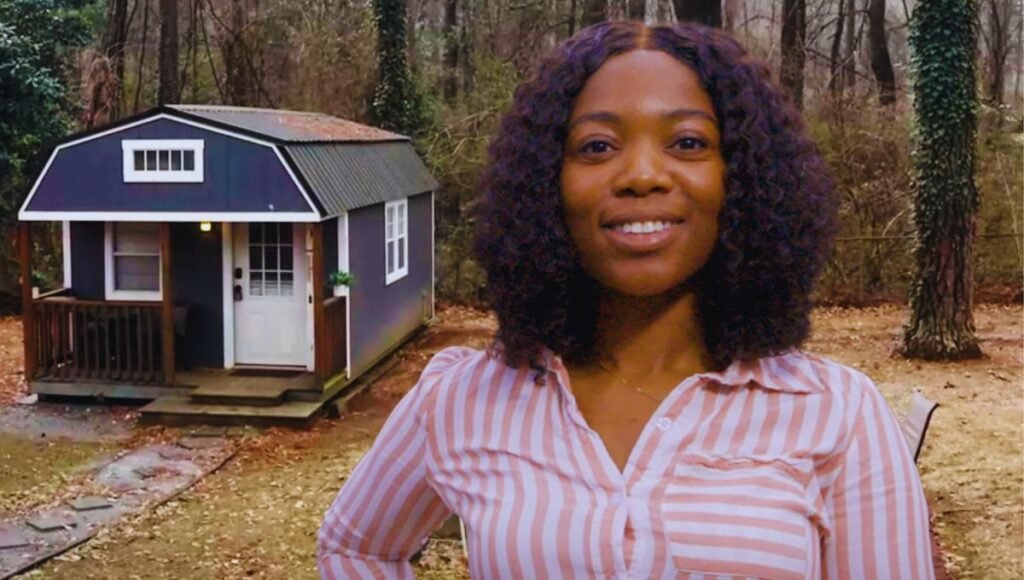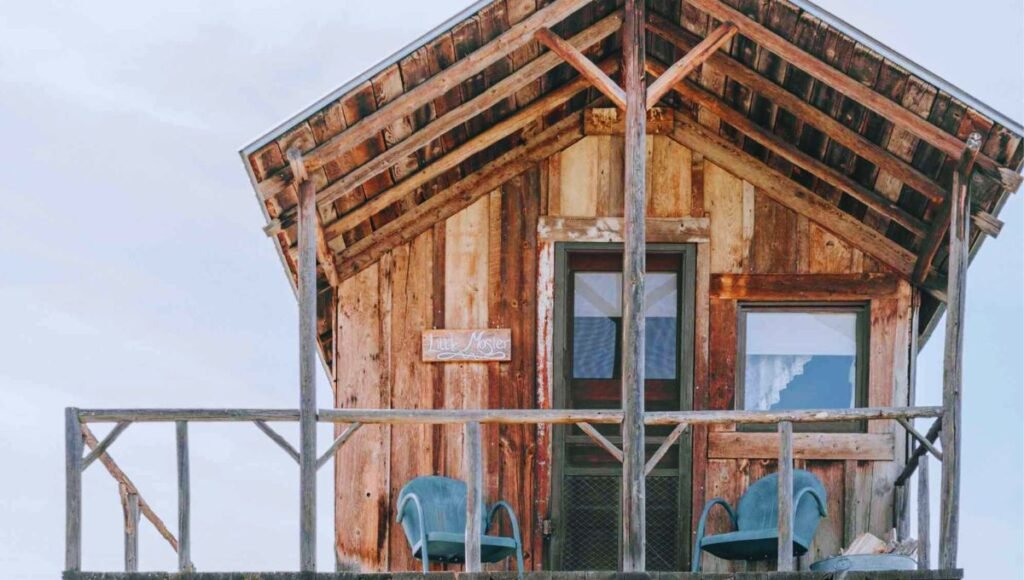When considering a more modest living arrangement in Miami, the cost of tiny homes can vary quite a bit. Typically, you’re looking at a range from $30,000 to $100,000, influenced by high-end appliances, smart home tech, and custom design touches. Don’t forget the land prices, which can add another $15,000 to $50,000 to your budget. And there are other costs too—building permits, construction materials, and utility connections. So, how do you balance your dream features with your budget constraints? Let’s break down these expenses and explore how you can make it work.
Key Takeaways
- Tiny homes in Miami cost between $30,000 and $100,000, depending on features and design.
- Land prices in Miami range from $15,000 to $50,000, influencing overall affordability.
- Permit and construction costs range from $31,500 to $63,000, excluding land.
- Utility connection expenses can add $3,200 to $9,500 to the overall cost.
- Financing options include personal loans, mortgages, and specialized tiny home loans.
Average Cost of Tiny Homes

When considering the average cost of tiny homes in Miami, you can expect to spend between $30,000 and $100,000 depending on factors such as size, materials, and customization.
Custom features greatly impact the price. For instance, high-end appliances, smart home technology, and unique design elements can drive costs upwards. Additionally, space optimization plays an important role in determining expenses. Efficient use of space often requires specialized furniture and innovative storage solutions, which can add to the overall cost.
Data shows that homes with optimized spaces and custom features tend to be on the higher end of the price spectrum. As a result, balancing your desired features with your budget is essential when planning your tiny home investment.
Land and Location Expenses
Securing a suitable plot for your tiny home in Miami can greatly impact your overall investment, with land prices ranging from $15,000 to $50,000 depending on the neighborhood and proximity to amenities. You must account for additional expenses such as zoning regulations and land surveys.
Zoning regulations will determine where you can place your tiny home, potentially limiting your options and impacting costs.
Consider these key points:
- Zoning Regulations: Confirm the land is zoned for residential use and allows tiny homes.
- Land Surveys: Conduct land surveys, costing around $500 to $1,000, to confirm boundaries and topography.
- Location: Proximity to utilities and amenities can raise land costs but may reduce long-term living expenses.
Analyzing these factors will help you make an informed decision.
Building Permit Fees
Obtaining building permits in Miami will typically cost you between $1,500 and $3,000, depending on the complexity and size of your tiny home project. These fees cover the administrative costs and inspections required by local authorities.
When you submit a permit application, you’ll need to make sure that your project complies with local zoning regulations, which dictate land use, building height, and property line setbacks. Non-compliance can lead to delays and additional costs.

Additionally, the permit process involves multiple inspections to verify adherence to safety standards. By accounting for these permit fees and understanding zoning regulations early on, you can streamline your tiny home project and avoid unexpected financial setbacks.
This ensures your project remains compliant and on schedule.
Material and Construction Costs
Material and construction costs for a tiny home in Miami typically range from $30,000 to $60,000, depending on the quality and type of materials used. Opting for eco-friendly materials can influence both the cost and construction time.
Here’s a breakdown:
- Standard Materials: Using conventional materials, you might spend around $30,000-$40,000, with a construction time of 3-4 months.
- Eco-Friendly Materials: These can push costs to $40,000-$60,000 due to higher initial investment but offer long-term savings and sustainability.
- Prefab Kits: Prefabricated kits are cost-effective, around $30,000-$50,000, and can greatly reduce construction time to as little as 1-2 months.
Choosing the right materials impacts not only your budget but also the efficiency and sustainability of your tiny home.
Utility Connection Costs
When considering utility connection costs for your tiny home in Miami, you’ll need to budget for water supply installation. On average, water supply installation can range from $1,200 to $3,000.
Electrical grid hookup is another essential cost to consider, typically ranging between $500 and $2,500.
Sewer system connection is also crucial and often falls between $1,500 and $4,000, depending on the complexity and local regulations.
Water Supply Installation
Connecting your tiny home to Miami’s water supply can greatly impact the overall utility installation costs, with expenses often ranging between $1,500 and $3,000 depending on various factors.
Several elements contribute to these costs:
- Water pressure: Ensuring adequate water pressure is essential. Low pressure can affect the performance of plumbing fixtures, leading to potential additional costs for pressure regulators.
- Plumbing fixtures: The type and number of fixtures you install will influence both material and labor costs. High-end fixtures can drive up expenses.
- Distance from main supply: The farther your tiny home is from the main water line, the more piping and labor will be required, increasing the overall cost.
Analyzing these factors helps you make informed decisions about your water supply installation.
Electrical Grid Hookup
Hooking up your tiny home to Miami’s electrical grid typically involves costs ranging from $2,000 to $5,000, depending on the complexity and distance from the main power source. It’s important to account for electrical inspections and necessary permits, which validate that your setup complies with local codes. Opting for solar panels can reduce long-term electricity costs but requires an initial investment.
| Cost Component | Estimated Cost |
|---|---|
| Grid Hookup | $2,000 – $5,000 |
| Electrical Inspections | $200 – $500 |
| Permits | $100 – $300 |
| Solar Panels (optional) | $3,000 – $10,000 |
Evaluating these factors helps you make informed decisions about your electrical setup, balancing upfront costs with potential savings from renewable energy sources.
Sewer System Connection
Sewer system connection costs for a tiny home in Miami generally range from $3,000 to $8,000, influenced by factors such as distance to the main sewer line and the complexity of the installation. When evaluating the costs, consider:
- Sewer Types: Different sewer types (gravity, pressure, or vacuum systems) have varying installation costs.
- Connection Regulations: Miami’s connection regulations may require permits, inspections, and compliance with local codes, affecting the overall cost.
- Distance and Terrain: The further your tiny home is from the main sewer line and the more challenging the terrain, the higher the installation costs.
Analyzing these factors objectively will help you budget more accurately for your tiny home’s sewer system connection in Miami.
Interior Design Budget
When planning your tiny home’s interior design budget, it’s important to allocate funds efficiently to guarantee both functionality and aesthetic appeal. Opting for DIY decor can greatly reduce costs; data shows that DIY projects can save you up to 50% compared to hiring professionals.
Additionally, thrift shopping is a smart strategy. Studies reveal that second-hand stores offer items at 20-80% lower prices than retail, allowing you to furnish your space affordably.
Prioritize essential furniture and multifunctional pieces to maximize your budget. For instance, a convertible sofa can serve as both seating and a bed, optimizing space.
Maintenance and Upkeep Costs
When managing maintenance and upkeep costs for your tiny home in Miami, you’ll need to focus on routine cleaning essentials, seasonal maintenance tasks, and budget-friendly repair tips.
Studies show that regular upkeep can extend the lifespan of your home and reduce long-term expenses. By allocating a small monthly budget to these tasks, you can maintain your home’s value and functionality efficiently.
Routine Cleaning Essentials
Keeping your tiny home in Miami clean and well-maintained involves investing in essential cleaning supplies. This can cost approximately $30 to $50 per month. Adhering to a regular cleaning frequency is critical to avoid build-up and maintain your home’s aesthetic.
Essential tools you should have include:
- Microfiber cloths: Effective for dusting and wiping surfaces without leaving streaks.
- Multi-surface cleaner: Versatile for various areas, ensuring you don’t need multiple products.
- Compact vacuum cleaner: Ideal for tight spaces, ensuring thorough cleaning.
Seasonal Maintenance Tasks
Investing in seasonal maintenance for your tiny home in Miami can prevent costly repairs and extend the lifespan of your property. Regular tasks like inspecting and sealing windows and doors are essential. Data shows that weatherproofing can reduce energy costs by up to 30%.
Make sure your HVAC system is serviced before summer; it’s vital in Miami’s humid climate. For winter, check insulation and gutters to handle occasional cold snaps and rain. Seasonal decor isn’t just about aesthetics; it can highlight potential issues, like moisture buildup.
Incorporating these weatherproofing tips will keep your home efficient and safe. Regularly set aside a budget for these tasks to avoid unexpected expenses, prioritizing preventive measures over reactive repairs.
Budget-Friendly Repair Tips
A proactive approach to tiny home maintenance in Miami can save you significant money by minimizing repair costs.
Here are three budget-friendly tips to keep your expenses low:
- DIY Projects: Tackling small repairs yourself can drastically cut labor costs. Studies show that DIY projects save homeowners an average of 50% on repair expenses.
- Secondhand Materials: Utilizing secondhand materials for repairs can reduce your costs by up to 40%. Websites like Craigslist and Habitat for Humanity ReStores are excellent sources.
- Regular Inspections: Conducting regular inspections can help you catch issues early, preventing costly repairs down the line. On average, early detection can save you 20-30% on maintenance costs.
Financing Options Available
Several financing options, including personal loans, mortgage loans, and specialized tiny home loans, can make purchasing an affordable tiny home in Miami more accessible.
Personal loans are often easier to obtain but typically come with higher interest rates. Mortgage loans for tiny homes may be available through certain banks, although these usually require higher credit scores and more stringent eligibility criteria.
Specialized tiny home loan programs, offered by select financial institutions, are tailored to the unique needs of tiny home buyers and may provide more favorable terms. Your credit score will play an important role in determining your eligibility and interest rates for these loans.
It’s vital to research and compare different loan programs to find the best fit for your financial situation.
Hidden Costs to Consider
While securing financing is a critical step, it’s equally important to account for hidden costs that can greatly impact the overall affordability of your tiny home in Miami.
Insurance coverage: Tiny homes often require specialized insurance, which can be more expensive than standard home insurance. Be prepared for this additional cost.
Property taxes: Depending on whether your tiny home is on wheels or a foundation, property taxes can vary. Stationary homes are typically subject to higher taxes.
Utility hookups and maintenance: Connecting utilities such as water, electricity, and sewage can incur significant costs. Regular maintenance is also essential to avoid costly repairs later.
Taking into consideration these hidden costs ensures you have a more accurate understanding of your tiny home’s total expenses.
Conclusion
To sum up, grasping the cost of affordable tiny homes in Miami requires careful analysis of various factors. You’ll need to balance your budget with desired features, from land and permits to materials and utilities.
Keep in mind, ‘you get what you pay for,’ so consider potential hidden costs and maintenance. By evaluating financing options and prioritizing your needs, you can make informed, data-driven decisions to achieve your tiny home dream without breaking the bank.